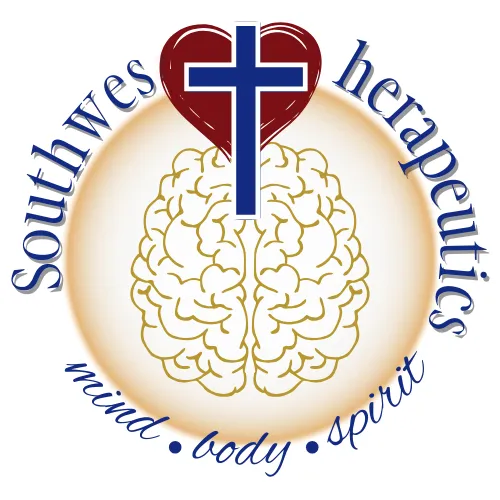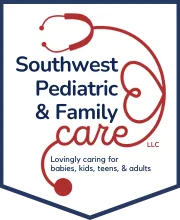
Child Abuse Prevention: Empowering Children and Parents to Speak Out
Child abuse remains a critical global issue, threatening the safety, mental health, and well-being of children across communities. Prevention efforts are essential—not only to reduce incidents but also to provide children with the tools and support they need to stay safe and thrive.
At the heart of prevention are the people closest to children—parents, caregivers, educators, and communities. Together, they play an active role in building awareness, fostering open communication, and creating safe environments where children are empowered to speak out. In this article, we’ll explore how children can recognize and report abuse, how parents can become proactive educators and advocates, and how organizations like Southwest Therapeutics support these efforts.
Empowering Children to Speak Out
Children need to know that their safety matters—and that help is available when they feel unsafe. Encouraging them to speak up, recognize harmful behaviors, and reach out to a trusted adult is the foundation of prevention.
📞 When in danger, children should be taught to dial 911 or tell a trusted adult immediately.
According to research, child abuse prevention education can lead to an increase in the reporting of abuse, especially child sexual abuse. This shows that empowering children through education works (Bright et al., 2022).
To truly make a difference, these lessons must start at home and continue in schools. When children grow up in an environment where open communication is encouraged, they’re more likely to report their fears and seek help. Educational programs that teach children how to identify unsafe situations, assert boundaries, and advocate for themselves are proven to boost confidence and reduce vulnerability (Lu et al., 2022).
The Role of Parents in Prevention and Advocacy
Parents are their children’s first line of defense. Talking about personal safety at an early age builds trust and awareness that lasts a lifetime.
👪 Key conversation topics include:
Body autonomy and consent
Safe vs. unsafe touch
Recognizing red flags in behavior from adults or peers
Active parental involvement—especially when participating in school-based abuse prevention programs—has been shown to improve children’s knowledge and resilience (Dudley et al., 2022).
In addition to home-based conversations, parents can advocate for safe environments by:
✔ Collaborating with schools to implement prevention programs
✔ Supporting ongoing training for teachers and staff
✔ Promoting positive and inclusive school climates
✔ Watching for emotional or behavioral changes that may indicate distress
Recognizing and Reporting Abuse
Not all signs of abuse are visible. Knowing what to look for can help adults intervene early and prevent further harm.
🔍 Possible warning signs of abuse include:
Unexplained injuries
Sudden withdrawal or aggression
Fear of certain individuals or places
Anxiety, depression, or trouble sleeping
Behavioral changes such as bedwetting, nightmares, or difficulty concentrating
Reporting suspected abuse is not just an ethical decision—it’s a legal obligation for teachers, healthcare workers, and other mandated reporters.
📞 In the U.S., individuals can call 911, contact local child protective services, or use one of the following New Mexico-based options:
Dial #SAFE from any mobile phone
Call (855) 333-7233 to reach a CYFD Statewide Central Intake Worker
Text (505) 591-9444 to communicate with REACH NM for CYFD assistance
Reporting concerns is a powerful step toward protecting a child’s future.
Promoting Safe and Supportive School Environments
Schools serve as a frontline defense in the fight against child abuse. With the right policies and education, they can be places of empowerment and protection.
🏫 When schools promote a positive climate and equip staff with training, children are more likely to report abuse—and educators are better prepared to respond. Research emphasizes that prevention efforts are most effective when teachers are trained and supported in recognizing abuse (Dudley et al., 2022).
In addition, schools must collaborate with community partners, including child protective services and health professionals. Programs must be culturally sensitive and inclusive to ensure that children from all backgrounds feel seen, heard, and safe (McKibbin & Humphreys, 2020).
Resources That Support Families
Families don’t have to navigate this journey alone. Here are local and regional organizations offering critical support:
🔹 Luna County Children and Youth Services – Local family support and resources
🔹 La Piñon Sexual Assault Recovery Services – Assistance for survivors of abuse and assault
🔹 New Mexico Children, Youth, and Families Department (CYFD) – Statewide services focused on child protection, foster care, and family wellness
These organizations offer guidance, counseling, and protection for families in crisis.
How Southwest Therapeutics Can Help
At Southwest Therapeutics, we are deeply committed to helping families impacted by trauma and abuse. Our team of trauma-informed therapists provides counseling and tailored support that addresses the emotional, psychological, and developmental effects of abuse.
We also equip parents with resources and language they can use to talk with their children about safety, boundaries, and trust.
📞 If you or someone you know needs support, please reach out. Contact Southwest Therapeutics at 575-936-4227 to learn more about our services and how we can support your family.
Final Thoughts: A Collective Responsibility
Preventing child abuse is not the job of one person or one group—it’s a shared responsibility. Through education, open communication, and community-wide support, we can create safe spaces where children feel empowered to speak up and protected every step of the way.
Supporting organizations like Southwest Therapeutics ensures that no child or parent has to face these challenges alone.
References
Bright, M. A., Roehrkasse, A., Masten, S., Nauman, A., & Finkelhor, D. (2022). Child abuse prevention education policies increase reports of child sexual abuse. Child Abuse & Neglect, 134, 105932. https://doi.org/10.1016/j.chiabu.2022.105932
Dudley, M. J., Nickerson, A. B., Kim, S., & Livingston, J. A. (2022). School-based child abuse prevention: The role of school climate in intervention outcomes for teachers. Psychology in the Schools, 59(6), 1158–1174. https://doi.org/10.1002/pits.22674
Lu, M., Barlow, J., Meinck, F., & Wu, Y. (2022). “Prevention alone is not enough”: Stakeholders’ perspectives about school-based child sexual abuse (CSA) prevention programs and CSA research in China. Journal of Interpersonal Violence, 37(7-8), NP5116–NP5142. https://doi.org/10.1177/0886260520959630
McKibbin, G., & Humphreys, C. (2020). Future directions in child sexual abuse prevention: An Australian perspective. Child Abuse & Neglect, 105, 104422. https://doi.org/10.1016/j.chiabu.2020.104422



